Not sure about choosing a charger? Try our revamped Charger Finder!
Try our revamped Charger Finder!
- For Installations
- All our chargers come with a 1 year warranty
- Free Shipping
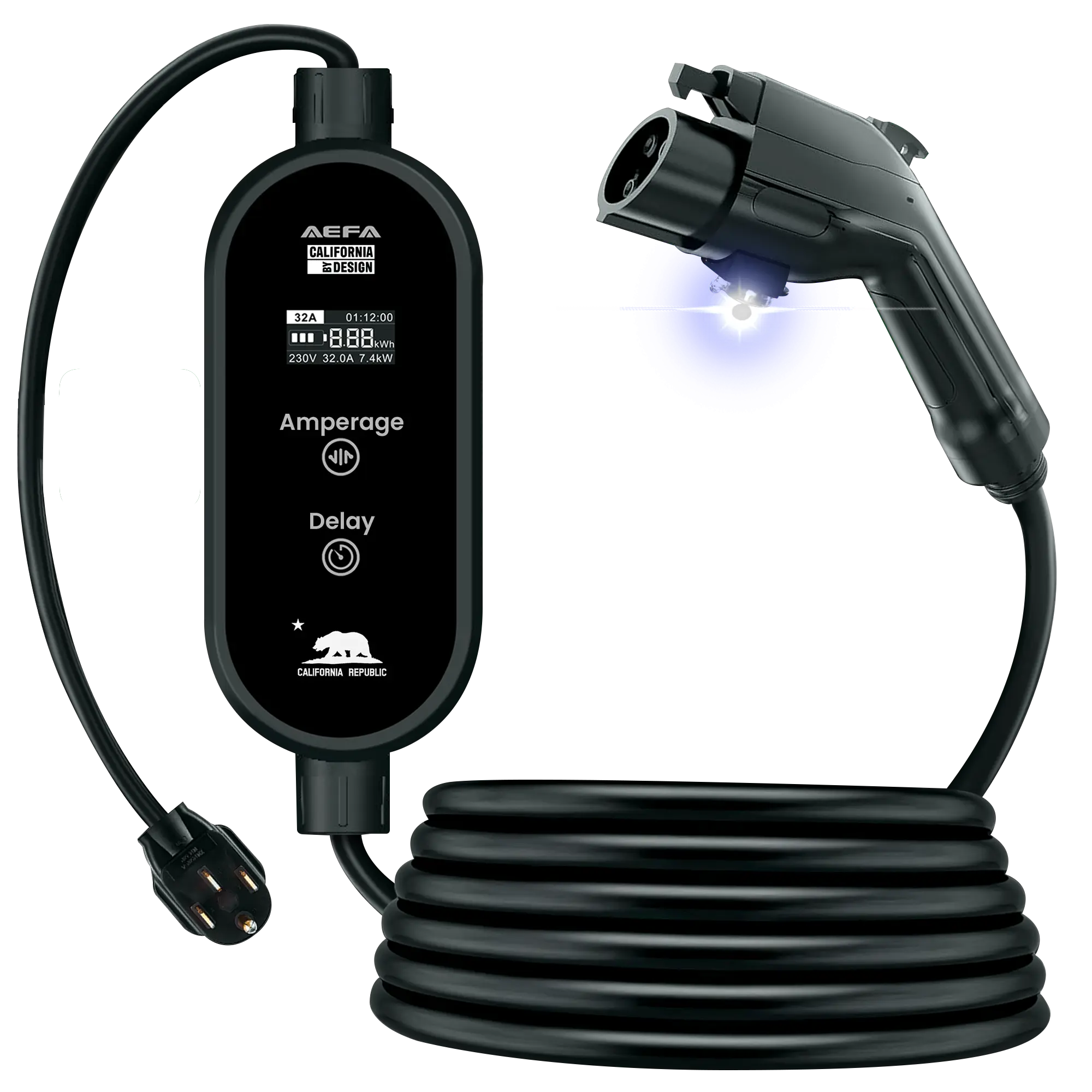

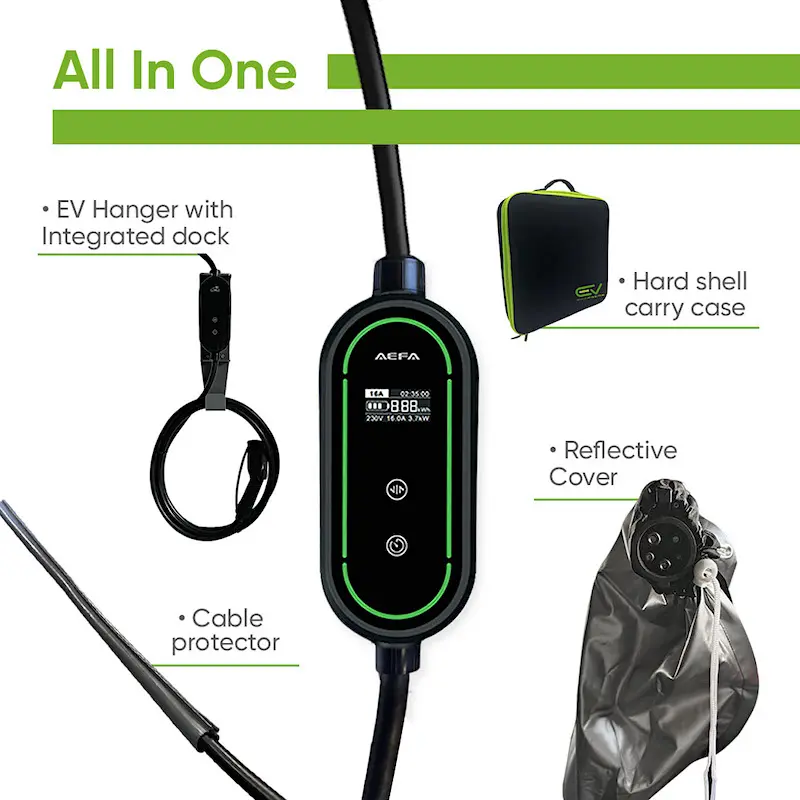
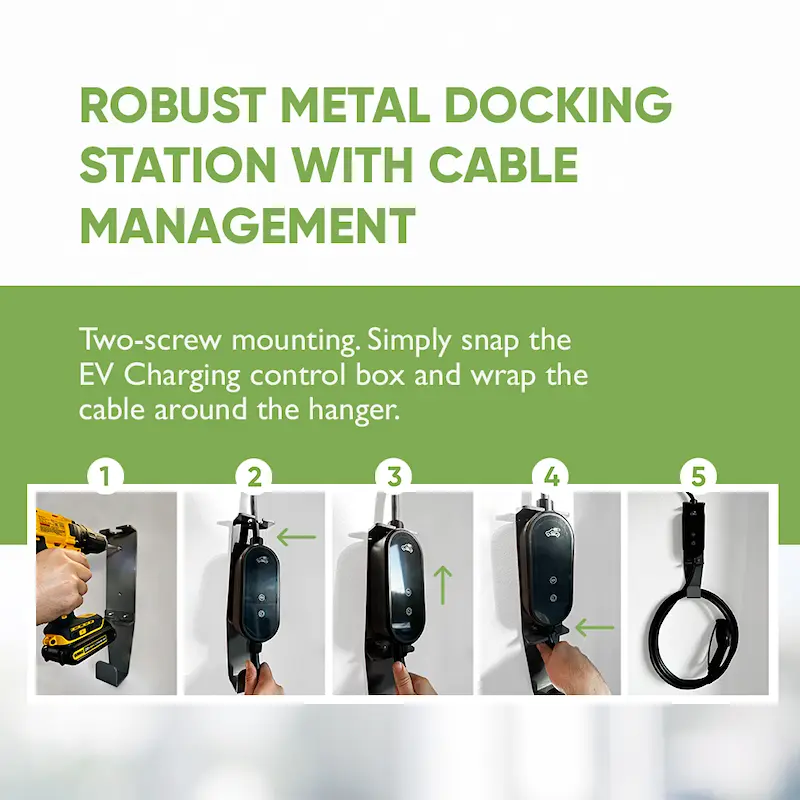
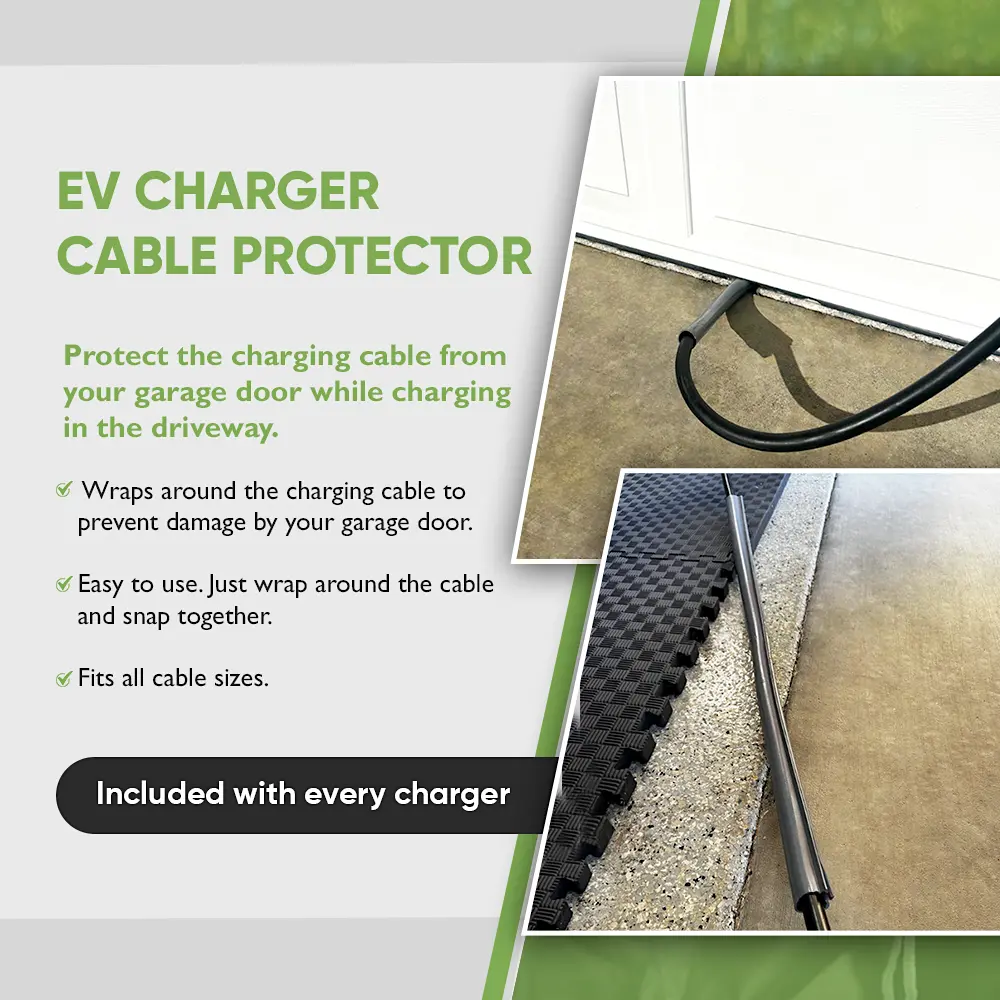
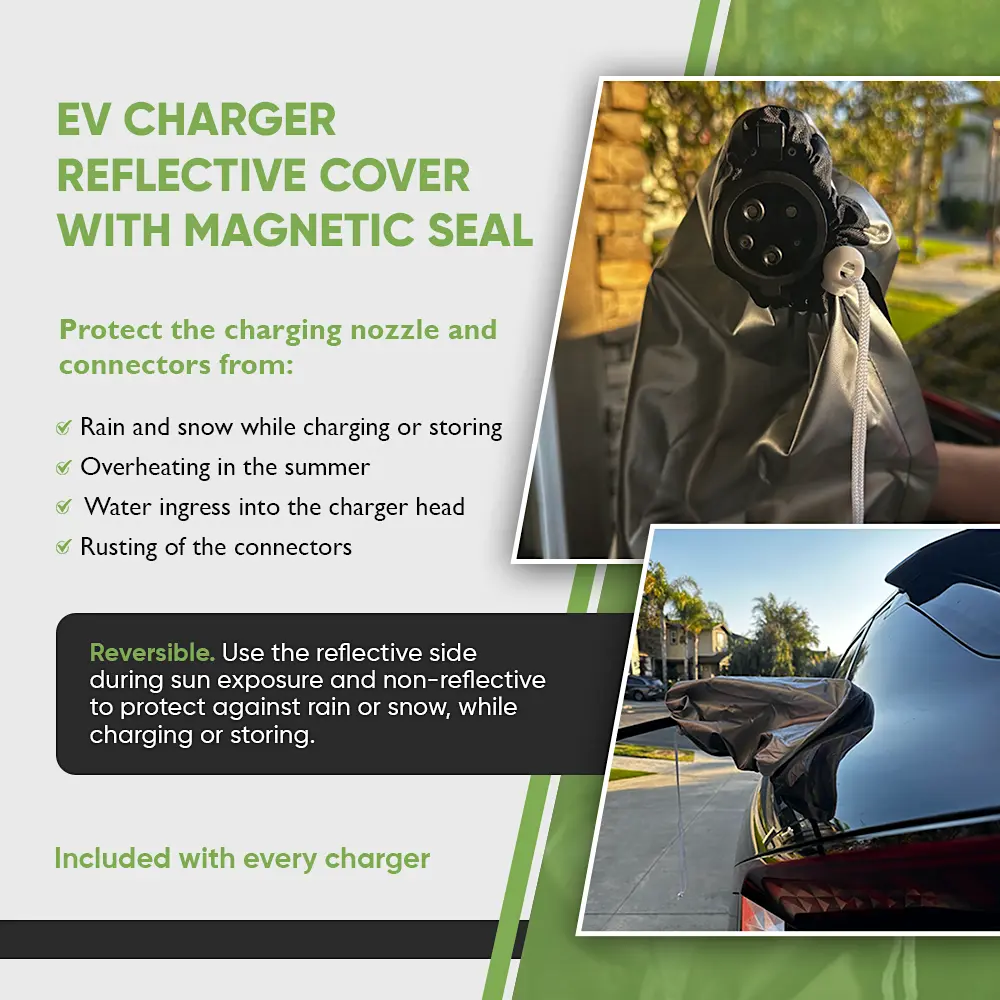
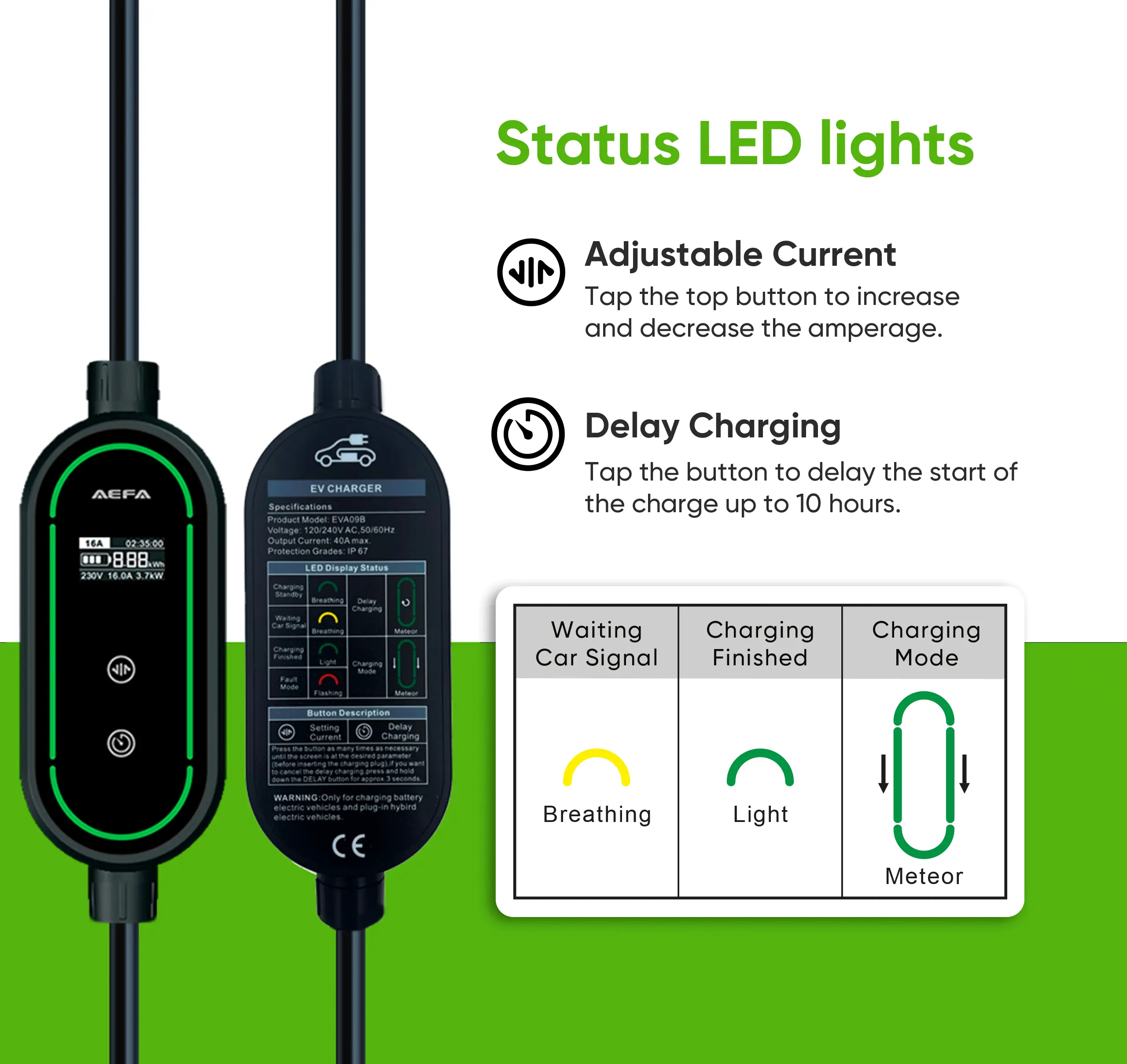
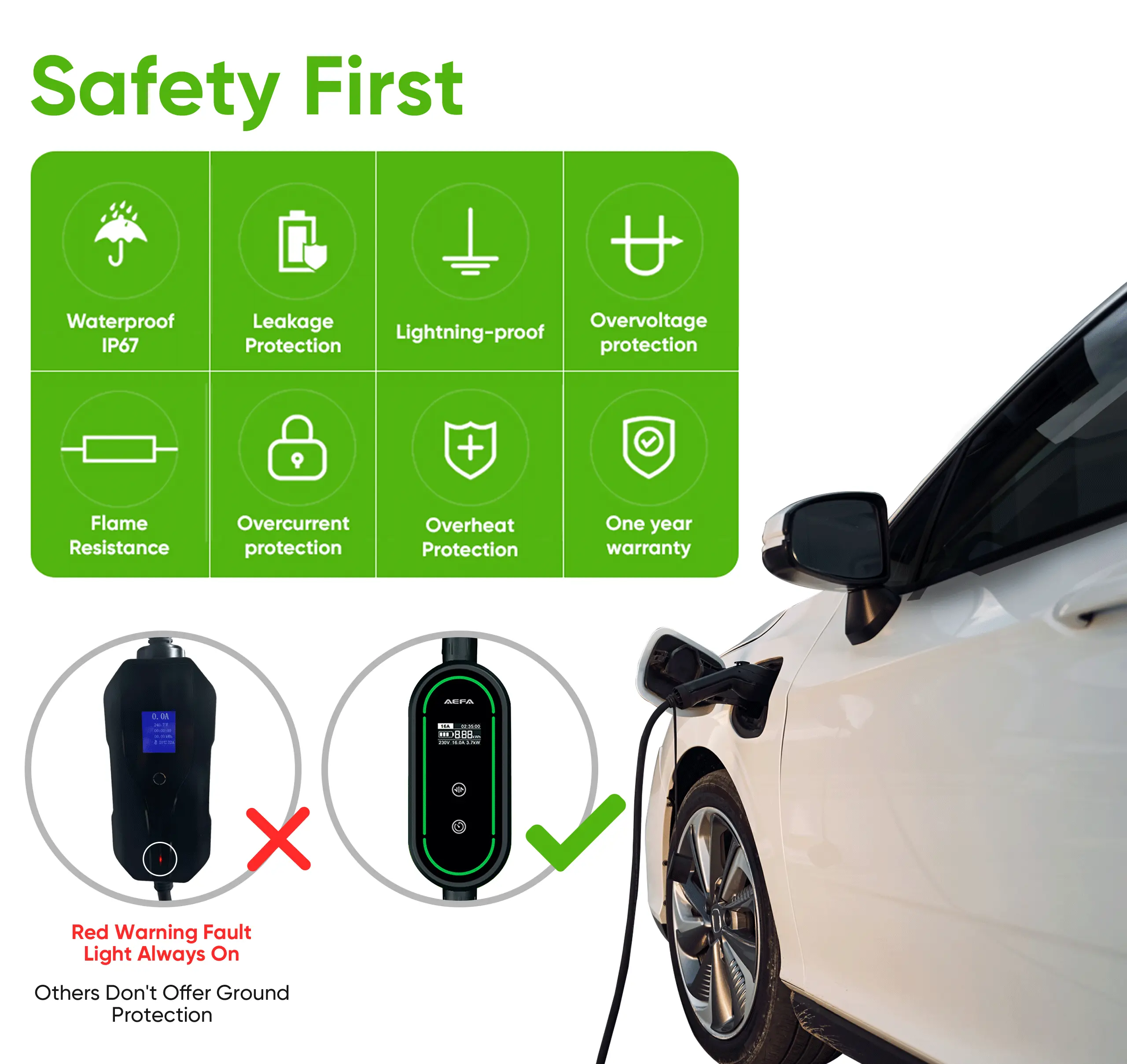
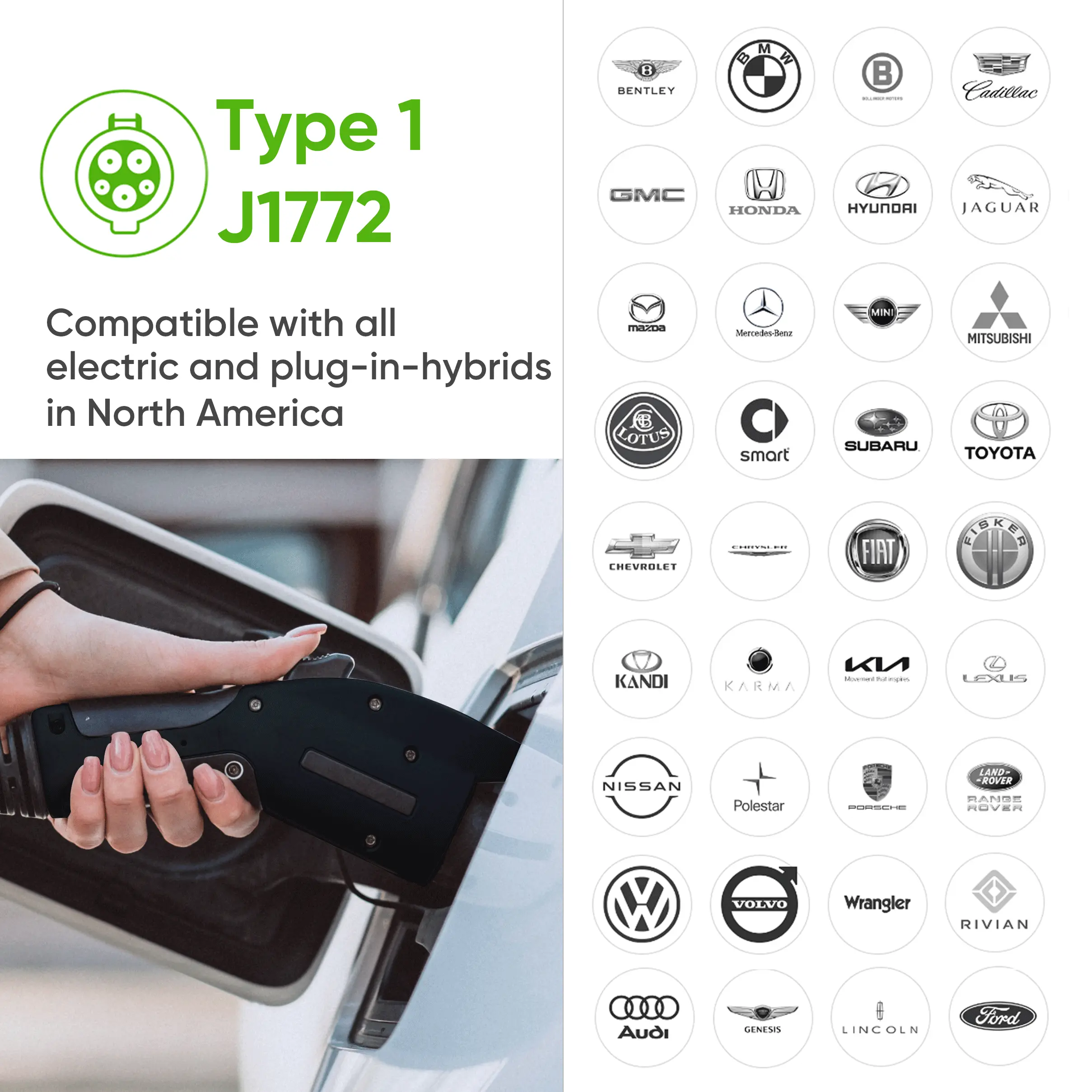
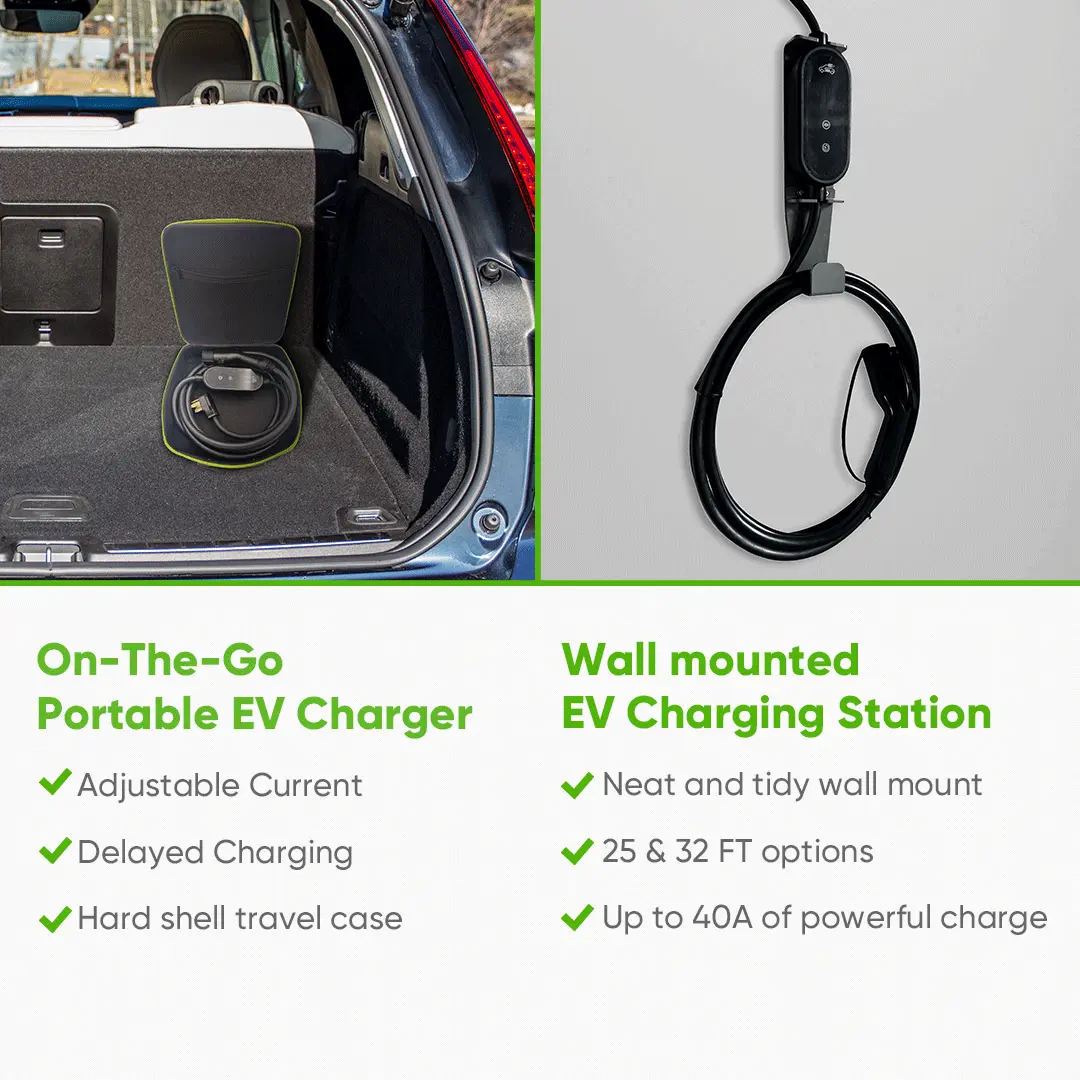
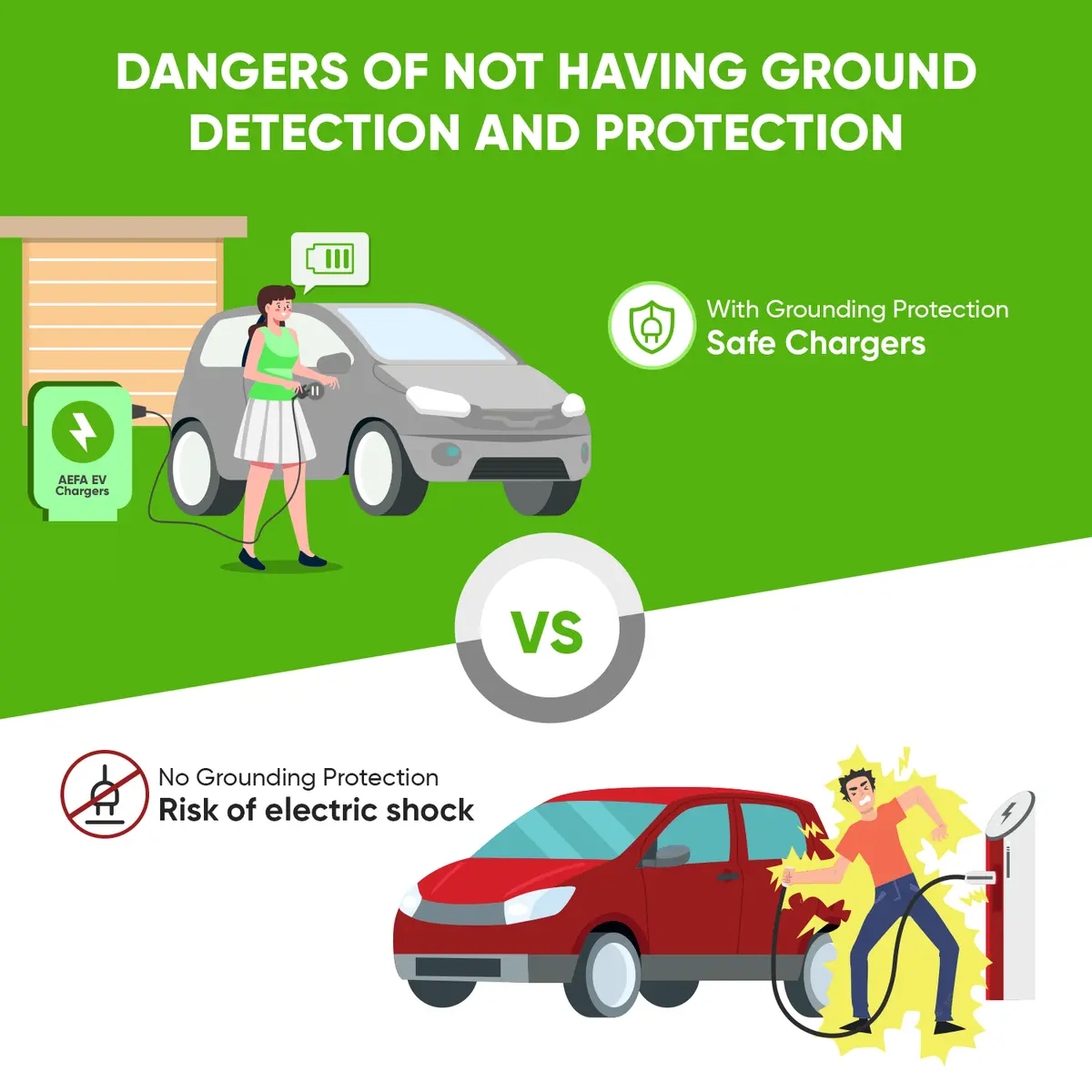
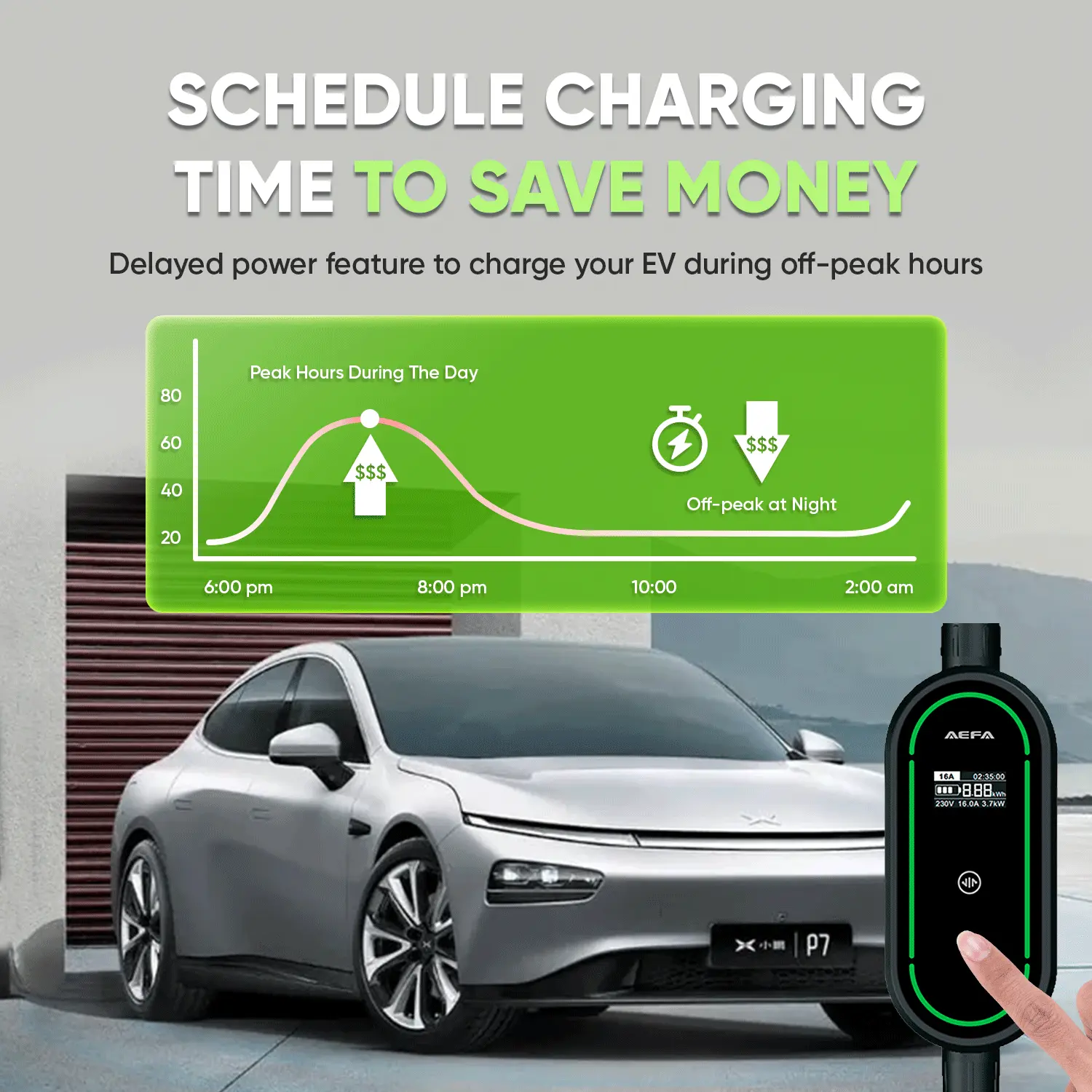
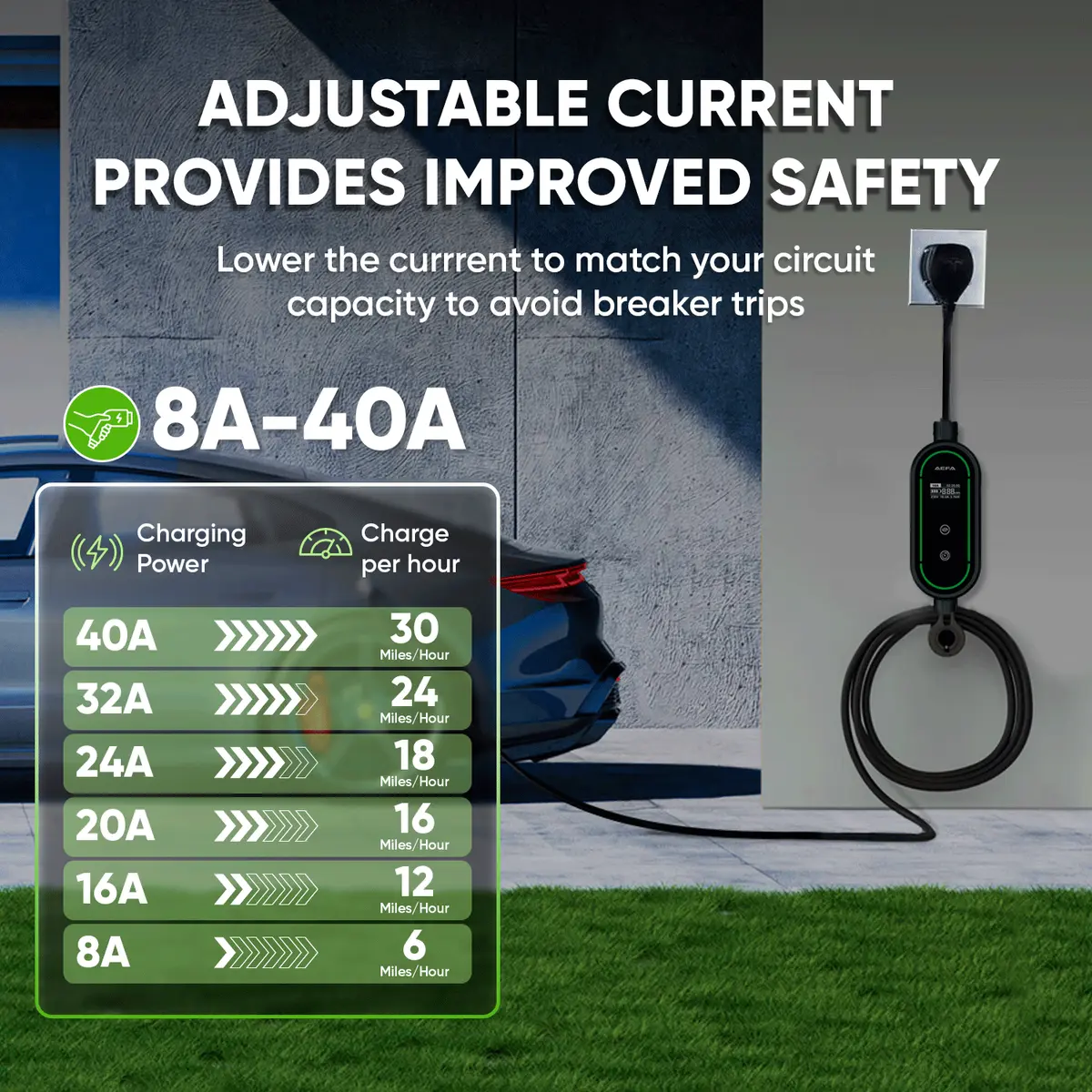
Starting at $120
This product is out of stock.
Order in the next hrs mins for delivery between 00 and 00!
| 3 Pin Plugs | NEMA 5-15 Socket (120V), NEMA 6-30, NEMA 6-20 (240V) |
| 4 pin Plugs
Rating Rated Currents |
NEMA 14-50, NEMA 6-50, NEMA 14-30, NEMA L14-40 (240V)
Indoor/Outdoor rated for installation anywhere 12, 16, 20, 24, 32 and 40 amp |
| Weight | 14 pounds |
| Connector Type | Type 1 (SAE J1772) lockable. Fits all cars including Tesla with Tesla supplied adapter |
| Control Box Dimensions | 2 inches deep x 3.5 inches wide x 8 inches long |
| Cable Length | Convenient 25 feet or 32 feet (total charging length from wall socket 26 feet and 34 feet) |
| Protection | IP67 (international standard EN 60529) |
| Assembly
Temperature |
None
22 degrees Fahrenheit to 140 degrees Fahrenheit |
| Warranty | 12 months |
| Input voltage | 208-240 Volts alternating current (AC), single phase |
| Approvals | CE, CB & TUV Approved |
| Material | Premium TPU with thin and lightweight cable |
| Compatibility | Suitable for all U.S. and Canadian EVs (SAE J1772 inlet) |
| Integrated DC Leakage Protection | Type B residual current detection |
| Surge Protection | Over/under voltage, overload protection, short circuit protection, leakage current protection, over
temperature protection, lightning protection, active ground detection |
| Ground Monitoring | Yes |
| Residual Current Detection | Alternating current 30 milliamps (mA), Direct Current 6 milliamps (mA)
*Requirements of GB 14048.2 – 2008, GB 16916.1-2014 and GB 22794-2008 |
| Features | LED indicator lights to manage charging errors |
The BMW 530e is a key part of BMW’s success within the plug-in hybrid market, with various models of BMW PHEVs being the top market option for those looking to benefit from the quiet electric car as well as retaining the advantages of a gasoline tank for those longer trips.
Uses a J1772 SAE Type 1 charger connector, which is compatible with manufacturers’ Level 1 EV chargers, but also supports Level 2 charging, allowing for faster charging from a 240-volt outlet. The charging capability of the BMW 530e is limited by the maximum charging power of 3.7kW, which is how quickly the car’s battery can accept the alternating current (AC).
Most EV customers seek faster, more reliable, and convenient EV charging solutions, and this is the same for BMW 530e owners. Manufacturers’ Level 1 EV chargers are generally expensive and sometimes difficult to acquire. Many customers, therefore, opt to purchase non-OEM chargers to obtain quicker charging times, and regulations within the U.S. require all non-OEM chargers to adhere to strict regulations. Home chargers, such as the BMW Wallbox and Flexible Fast Charger, offer convenient and faster charging options.
We offer a number of Level 1 and Level 2 chargers to suit all EV owners. We have created the below guide to help BMW 530e PHEV owners choose the appropriate charging solution.
The BMW 530e iPerformance is a standout in the plug-in hybrid electric vehicle market, seamlessly blending a robust gasoline engine with an efficient electric motor. As part of the prestigious BMW 5 Series, this model is available in both Saloon and Touring body styles, catering to diverse preferences. The BMW 530e iPerformance is equipped with a 9.2 kWh battery, offering an electric-only range of up to 20 miles. This makes it an ideal choice for short commutes and city driving. The vehicle utilizes the Type 2 charging standard and supports a maximum charging power of 3.7 kW, ensuring efficient and reliable charging.
| Battery capacity: |
|---|
| 9.2 kWh |
| Electric-only range: |
|---|
| Up to 20 miles |
| Charging standard: |
|---|
| Type 2 |
| Maximum charging power: |
|---|
| 3.7 kW |
| Charging time (0-80%): |
|---|
| 3 hours (fast charging), 6 hours (slow charging) |
These key stats highlight the BMW 530e iPerformance’s impressive battery capacity and efficient charging capabilities, making it a practical choice for those looking to embrace electric vehicle technology.
Charging your BMW 530e iPerformance can be done using various types of EV chargers, each offering different charging times. The time required to charge your vehicle can also be influenced by ambient temperature. Here are some approximate charging times for the BMW 530e iPerformance:
| Level 1 (120V): |
|---|
| Approximately 12 hours (0-80%) |
| Level 2 (240V): |
|---|
| Around 3 hours (0-80%) |
| DC Fast Charging: |
|---|
| About 30 minutes (0-80%) |
These options provide flexibility depending on your charging needs and available infrastructure, ensuring your BMW 530e is always ready for the road.
The BMW 530e iPerformance uses a Type 2 connector, a standard for electric vehicles in Europe. This connector supports a maximum charging rate of 3.7 kW, which is suitable for fast charging. The actual charging rate can vary based on the type of charger used and the ambient temperature, but the Type 2 connector ensures compatibility with a wide range of charging stations.
Selecting the right EV charger for your BMW 530e iPerformance involves considering several factors to ensure optimal performance and compatibility. Here are some tips to guide you:
| Plug type |
|---|
| Ensure the charger has a Type 2 connector, compatible with your vehicle. |
| Charging rate |
|---|
| Opt for a charger with a charging rate of at least 3.7 kW to benefit from fast charging. |
| Compatibility |
|---|
| Verify that the charger is compatible with your vehicle’s onboard charger and battery management system. |
By considering these factors, you can choose an EV charger that meets your needs and ensures efficient charging for your BMW 530e.
There are several types of plugs available for EV chargers, each suited to different charging needs:
| NEMA 5-15 |
|---|
| A standard 120V household outlet used for Level 1 charging. |
| NEMA 14-50 |
|---|
| A 240V outlet used for Level 2 charging. |
| Type 2 |
|---|
| A standard connector type for electric vehicles in Europe, used for fast charging. |
| DC Fast Charging |
|---|
| A high-power connector type used for DC Fast Charging. |
Choosing the correct plug type is essential for safe and efficient charging, ensuring your BMW 530e iPerformance is always ready for your next journey.
| Battery Size |
|---|
| 12 kWh |
| DC Commercial Charging compatibility |
|---|
| No |
| Average Cost per Charge |
|---|
| ~ $2 |
| Level 2 charging |
|---|
| Yes |
| Charge Status Indicator |
|---|
| Yes, helps monitor charging progress |
These key stats highlight the BMW 530e iPerformance’s impressive battery capacity and efficient charging capabilities, making it a practical choice for those looking to embrace electric vehicle technology.
We have produced the below table to show charge times for different EV plug types for the BMW 530e, summarizing both Level 1 and Level 2 EV Chargers. It’s important to note that driving conditions such as weather and terrain can impact the vehicle’s range and charging frequency.
| Plug Type |
|---|
| Level 1 – 5-15 (regular 3 pin) 120 volts |
| Level 2 – 14-30 (4 pin electric dryer type) 240 volts |
| Level – 14-50 (4 pin EV Plug) 240 volts |
| Battery Size (kWh) |
|---|
| ~12 kWh |
| ~12 kWh |
| ~12 kWh |
| Charge Power |
|---|
| 1.5 KW/hour @ 12 amps |
| 5.5 KW/hour @ 24 amps |
| 9.6 KW/hour @ 40 amps |
| EV Charge Time |
|---|
| ~8 hours |
| ~3.25 hours |
| ~3.25 hours |
The BMW 530e can be charged with a J1772 Type 1 charger connector either at home, work or at a public charging station. Some chargers come with an LCD screen to display the charge status and operational conditions. The car will accept an alternating current (AC) of 3.7kW/h which is the maximum charging power the BMW530e will take from a 240 volt plug. In the table above, this is why the EV charge time does not decrease since there is a maximum hourly charging acceptance rate.
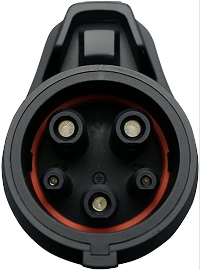
The majority of EV owners, including plug-in hybrid owners, choose to charge at home due to the convenience, speed of charging, and additional comfort. There are fewer commercial charging options for plug-in hybrids as they are not compatible with direct current (DC) commercial chargers due to limitations in battery technology. However, for those who need to charge their BMW 530e while on the go, public charging stations offer extensive and convenient charging infrastructure, seamlessly integrated within vehicle navigation systems and mobile applications. As commercial level 2 charging stations become business due to increases in the EV population, the requirement for home-installed Level 2 chargers will become more critical.
Home EV charging is most popular for a BMW 530e as commercial EV charging stations become busier and plug-in hybrids are incompatible with DC fast charging. Home charging offers financial incentives and grants, making it a cost-effective solution, while a tethered charge point provides the convenience of scheduled charging through app connectivity.


The increasingly popular plug-in hybrid market allows owners to benefit from both electric and gasoline miles depending on the length of the trip. The BMW530e provides 21 all-electric miles which is perfect for short trips and as well as a full gas engine milage for those longer trips. Maintaining an optimal cabin temperature can impact the overall energy consumption and cost of charging, as preconditioning the vehicle not only warms up the cabin but also optimizes the battery temperature.
The below table assumes charging at the U.S. current average for residential electricity rates of 20 ¢/kWh and assumes a full 21 miles of electric range is utilized before the gas engine is required.
| Place | |
|---|---|
| Home (empty to full)* | Commercial Level 2 EV Chargers ** |
| Average Cost | |
|---|---|
| ~ $2.50 | ~ $6 |
| Cost/Mile | |
|---|---|
| $0.11¢ / mile | $0.28¢ / mile |
*Assumes 20 ¢/kWh average U.S. tariff. Residential tariffs vary by State.
** Assumes 50 ¢/kWh tariff for most Level 2 (AC)
If you don’t find the answer you need, feel free to contact us.
The BMW 530e can only be charged at Level 1 and Level 2 commercial charging stations, as a plug-in hybrid the BMW 530e does not work with DC commercial chargers.
Even with a 21-mile electric range, a Level 1 charger would take 8 hours to fully charge therefore you may not always benefit from the full electric range. However it is possible to charge with a residential 3-pin EV charger such as the NEMA 5-15.
The fastest charging solution for the BMW 530e is the Level 2 NEMA 14-50 EV charger which utilizes a 240 volt EV charger and significantly reduces charging time to around 3 hours.
This plug-in hybrid uses a J1772 SAE Type 1 charger which is the North America standard.
No, the BMW 530e uses a J1772 type connector and is currently not compatible with NACs.
No, non-OEM chargers are also suitable as EV chargers are interchangeable and compatible with different manufacturers.
Our most popular EV charger is the Level 2 NEMA 14-50 charger.
Convenience, comfort and speed are key benefits of Level 2 charging for the BMW 530e.
Our high power level 2 EV chargers will achieve a full charge in around 3 hours. Alternatively, we have a complete range of BMW 530e EV chargers with all different EV plug types.
What are the advantages of electric cars compared to traditional combustion engine vehicles?
Electric cars operate exclusively on electricity without a combustion engine, which means they produce zero emissions and are more environmentally friendly. They also address common concerns such as range anxiety, with modern electric cars often exceeding 250 kilometers on a single charge, making them suitable for daily use. Additionally, the availability of various charging options, including home and commercial chargers, enhances their convenience.
Thanks for your interest! We’ll be notifying you once the product gets back in stock.